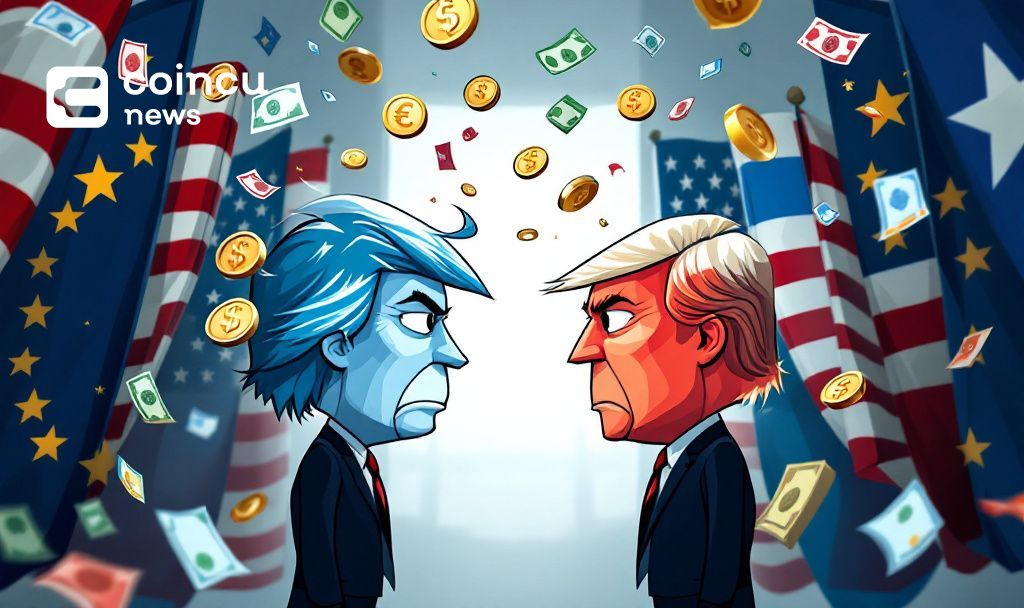 CaryptosHeadlines Media Has Launched Its Native Token CHT.
Airdrop Is Live For Everyone, Claim Instant 5000 CHT Tokens Worth Of $50 USDT.
Join the Airdrop at the official website,
CryptosHeadlinesToken.com
CaryptosHeadlines Media Has Launched Its Native Token CHT.
Airdrop Is Live For Everyone, Claim Instant 5000 CHT Tokens Worth Of $50 USDT.
Join the Airdrop at the official website,
CryptosHeadlinesToken.com
- U.S. plans 20% tariff on EU, affecting trade relations.
- EU officials warn of “devastating” impact on member states.
- Negotiations stalled, EU considers retaliatory measures.


Representatives from the European Union are on alert as the United States prepares to implement a 20% tariff on goods from the entire EU, expected to be announced by President Trump on April 2nd. This significant tariff hike is likely to strain transatlantic relations and disrupt trade flows.
The planned tariff increase poses substantial economic challenges for the EU, threatening to impact industries heavily dependent on exports to the U.S. Additionally, it marks the highest tariff levels since the EU established a common trade policy in the late 1950s.
U.S. Sets 20% Tariff, EU Faces Economic Threat
Informed sources reveal the U.S. plans to apply a uniform 20% tariff rate on the EU, eliminating any differentiated standards across member states. EU Trade Commissioner Maros Sefcovic warned this move could be “devastating” for the EU’s economy, citing the unprecedented nature of such tariffs.
“I’m unable to provide quotes or detailed information about the specific news updates you requested from March 27th, 2025, regarding the EU’s expectations for Trump’s ‘reciprocal tariff’ plan or statements from EU Trade Commissioner Sevkovic, as I do not have access to primary sources or the specific contents of those sources. For any upcoming analyses or reports on trade relations between the EU and the US, I recommend checking official government statements, reputable financial news websites, and verified Twitter accounts of officials involved in trade discussions. This will ensure that you obtain the most accurate and up-to-date information directly from authoritative sources.”
EU Responses and Historical Comparison Amid Tariff Tensions
The negotiations between the EU and U.S. have encountered obstacles, leaving the EU with limited options to prevent these tariffs. The EU’s inability to delay or avert the tariffs has prompted considerations of retaliatory measures.
EU officials express serious concerns over the future of EU-U.S. trade relations. Sefcovic, in direct conversations with U.S. representatives, emphasized the consequences, but the U.S. has shown no signs of reconsideration or exemptions.
Did you know? The last time the EU faced such high tariffs was during the post-war era when trade policies shifted dramatically to rebuild economies.
Economic analysts predict a shift in EU trade patterns, urging closer ties with other global partners. The retrospective outlook on EU-U.S. trade reveals minimal tariffs in previous decades, emphasizing today’s stark contrast.
Analysts view this tariff plan as a move towards bilateral negotiation difficulties which could impact financial markets, pushing investors to diversify interests globally. Historical data supports the concern about potential recessive impacts within key EU economies as they reevaluate trade dependencies.












